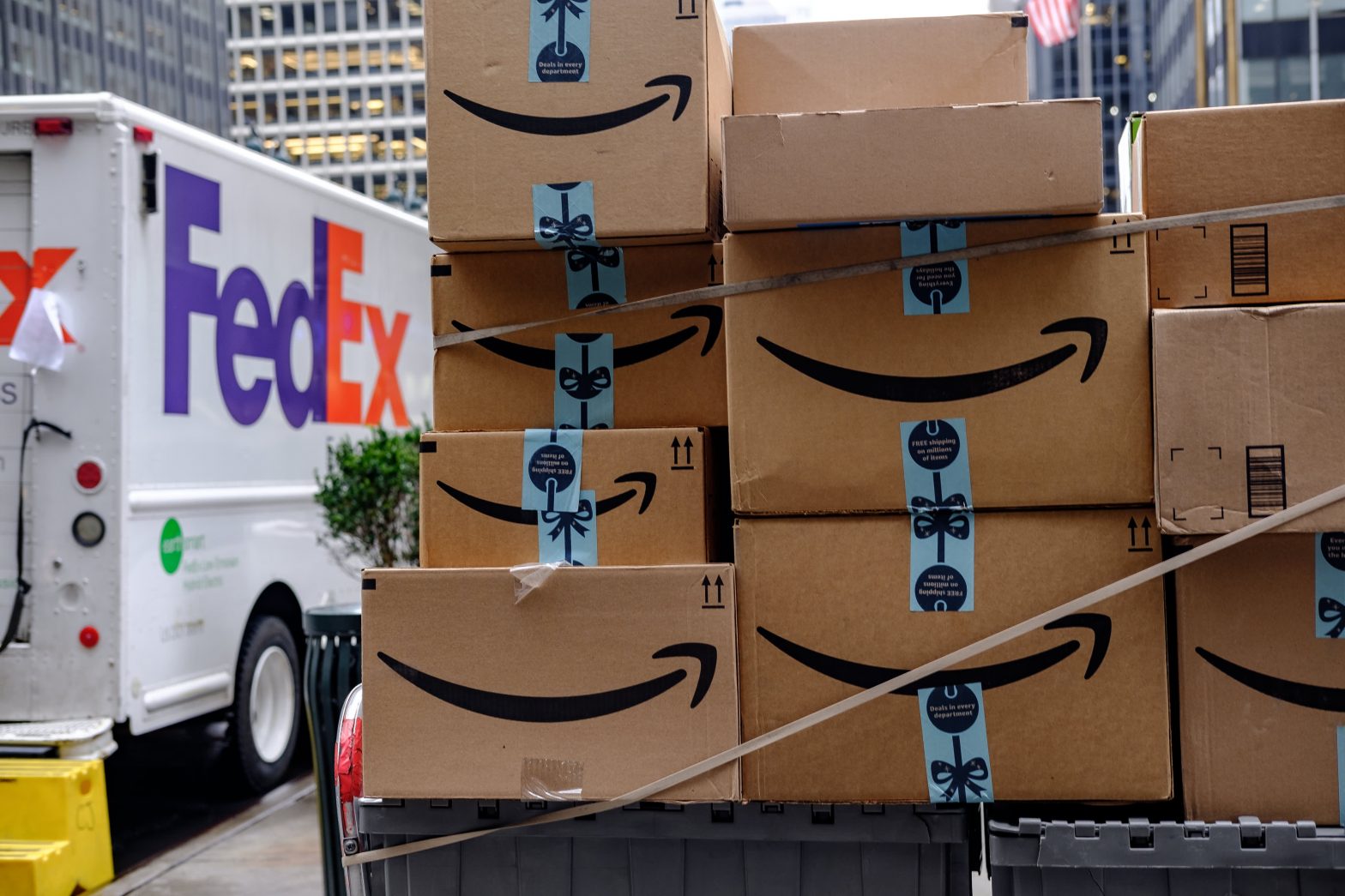Amazon.com Inc. packages sit in front of a FedEx Corp. delivery truck in New York.
Christopher Lee | Bloomberg | Getty Images
Consumers logged online on Monday and spent $10.7 billion, marking a 1.4% decrease from year-ago levels, according to data from Adobe Analytics.
This year’s tally marks the first time that Adobe has tracked a slowdown in spending on major shopping days. Adobe first began reporting on e-commerce in 2012, and it analyzes more than 1 trillion visits to retailers’ websites.
Despite the slowdown, Adobe expects the entire holiday season will see record-breaking e-commerce activity, as shoppers spread out their dollars over more days.
So far, from Nov. 1 through Cyber Monday, consumers in the United States have spent $109.8 billion online, which is up 11.9% year over year, Adobe said. And on 22 of those days, consumers purchased more than $3 billion worth of goods, another new milestone, it said.
Adobe anticipates digital sales from Nov. 1 to Dec. 31 will hit $207 billion, which would represent record gains of 10%.
Last Cyber Monday, retailers rang up $10.8 billion in sales on the web, as more people stayed home and avoided shopping in retailers’ stores due to the ongoing coronavirus pandemic. It marked a record day for e-commerce purchases in the U.S.
The slight deceleration in online spending follows a similar pattern that played out on Thanksgiving day and on Black Friday this year, as shoppers appeared to have spread out their dollars onto more days rather than squeezing their shopping into “Cyber Week.” Some of that behavior has been encouraged by retailers, including e-commerce behemoth Amazon, that have been touting Black Friday style deals since October.
Retailers rang up $8.9 billion in sales online on Black Friday, down from the record of about $9 billion spent on the Friday after Thanksgiving a year earlier, Adobe said. And on Thanksgiving day, consumers spent $5.1 billion on the internet, flat from year-ago levels.
Stores were also a little less crowded on key shopping days this year versus pre-pandemic times, as retailers gave consumers less of a reason to line up outside the mall in the wee hours of the morning. Shopper traffic on Black Friday was up 47.5% compared with year-ago levels, but was still down 28.3% versus 2019, according to separate data from Sensormatic Solutions. Many retailers, including Walmart and Target, also kept their doors closed on Thanksgiving this year.
“With early deals in October, consumers were not waiting around for discounts on big shopping days like Cyber Monday and Black Friday,” said Taylor Schreiner, director at Adobe Digital Insights.
Another factor contributing to shoppers getting a head start on their gift buying this year is ongoing concerns around bottlenecks in the global supply chain and fears of finding merchandise out of stock.
On Cyber Monday, Adobe found the prevalence of out-of-stock messages on the internet rose 8% from the prior week. So far in November, out-of-stock messages on retailers’ websites are up 169% compared with pre-pandemic levels, it said. And shoppers are finding items out of stock 258% more often than they were two holidays, Adobe said.
Discounts have also been weaker compared with past holidays, which could give consumers less of a reason to log on and look for deals or discourage them from spending.
Discount levels for electronics were for 12% off on Cyber Monday, compared with 27% off a year earlier. Apparel was marked down by 18%, compared with 20% a year earlier. And appliances were only discounted by about 8%, versus by 20% in 2020.
Inflation on everything from fuel to raw materials is leading some businesses to pass on a fraction of those costs to consumers. Adobe said the final price point of consumers’ shopping carts on Cyber Monday was up 13.9% year over year. That was also driven in part by more shoppers ringing up bigger-ticket items, such as furniture, it said.
The National Retail Federation, the retail industry’s leading trade group, coined the term “Cyber Monday” in 2005 after it noticed an uptick in the number of people shopping online the Monday after Thanksgiving.
NRF is forecasting U.S. retail sales during November and December to rise by a record 8.5% to 10.5% year over year, amounting to as much as $859 billion. Over the past five years, the average increase was 4.4%, NRF said.
